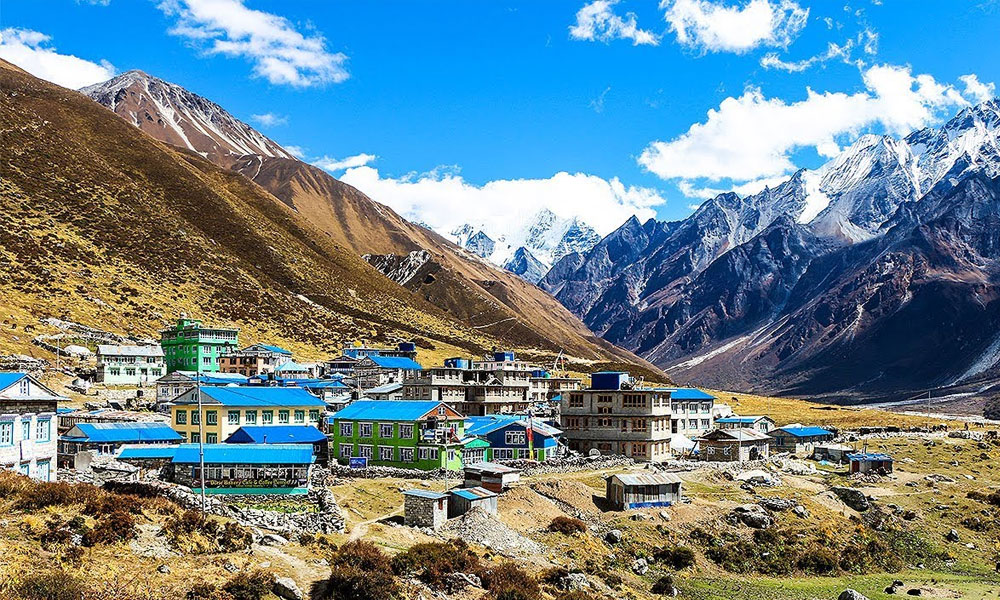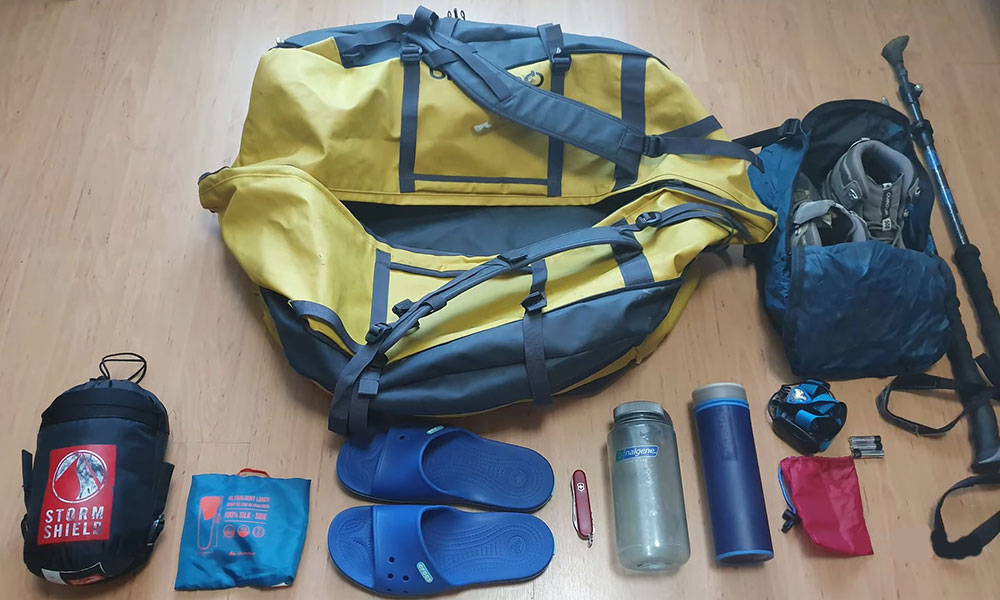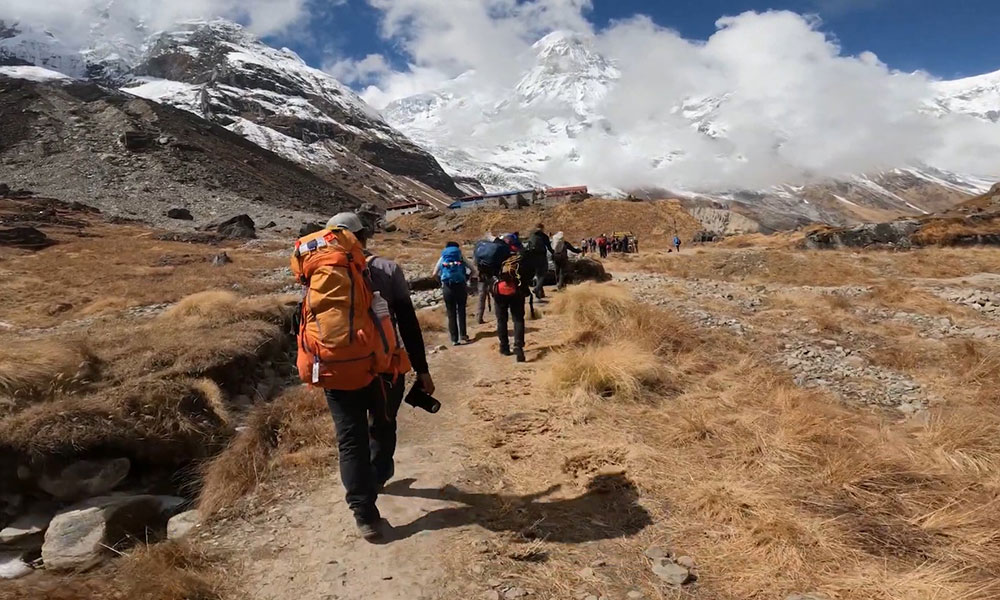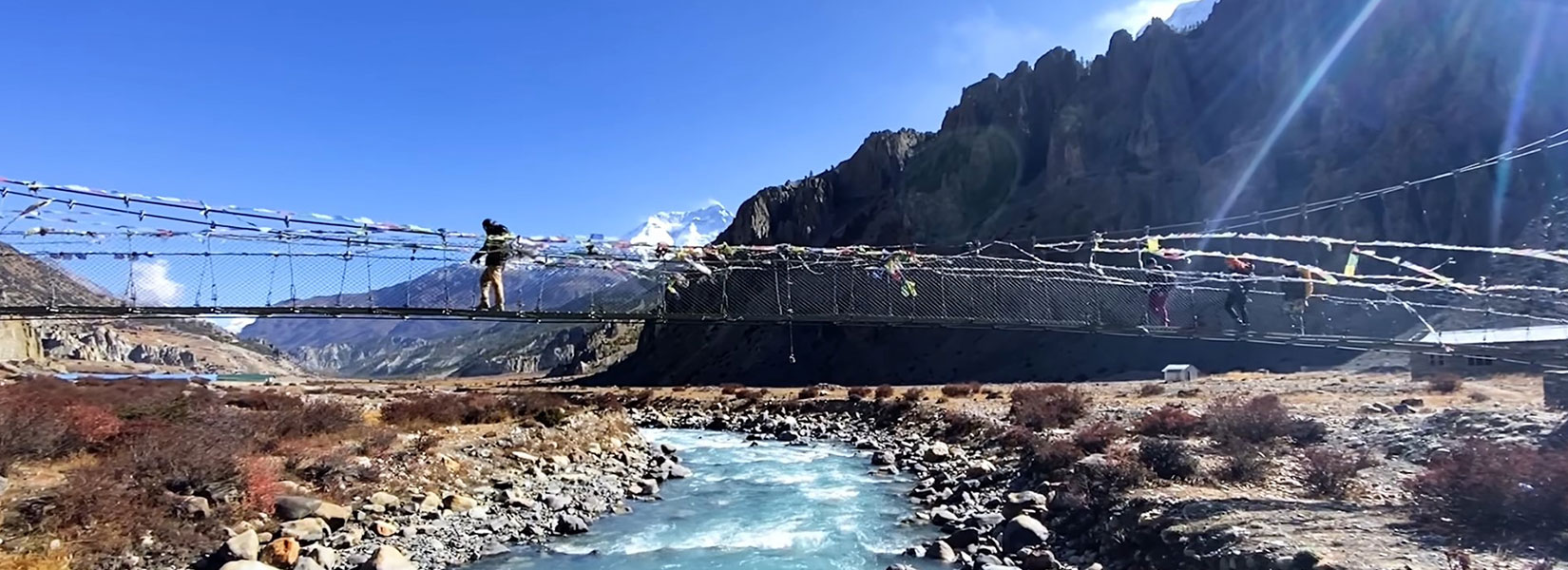Nepal is well-known around the world for its picturesque beauty and also for its breathtaking landscapes. Mount Everest, the highest peak of the Himalayas, is located in Nepal—the Himalayan nation(read: Where is Mount Everest located?). This country is known to the locals with the metaphor “Sagarmatha,” as described in Nepali as the forehead of the sky. The Everest base camp located here is one of the hot destinations for trekking thus, adventure lovers from around the world always find this country a sought-after place for exploration.
Apart from the Everest region, which is the most popular destination, Nepal also offers several other options to make the best of a trip they plan, such as the popular Annapurna Region, Upper Dolpo, Upper Mustang, Kanchenjunga, Langtang Region, and the like meant for the avid trekkers to choose from.
Depending on their proficiency level and the ease or difficulty of trekking, trekkers can choose from several options available to them here. Nepal has been attracting more than 2 lakh trekkers every year, with several agencies offering various services to interested trekkers.
Although a feast for the eye and an item on the bucket list for avid trekkers, trekking in Nepal also comes with its own set of challenges, with extremely long hiking treks, unpredictable weather, rough terrain, limited civilization, and limited access to resources poses a set of problems to the trekkers which they need to be aware of and prepare themselves accordingly.
Factors that might ruin your long-distance treks in Nepal

Here is a list of the most popular things that might ruin your long-distance treks in Nepal:
Unpredictable weather conditions
 This is the first and foremost important factor that might ruin your long-distance treks in Nepal. Nepal is weather varies greatly depending on the geography and altitude of this region. Temperatures drop at 6 degrees C for every 1000 m rise in altitude. In winter, though, temperatures can plummet to sub-zero levels too. Trekking in the monsoon season can also be accompanied by rain, mist, and fog almost every day, but when the clouds part, one can experience the beautiful views of the valley. Spring season is generally warm, but higher altitudes will have storms and snowfalls.
This is the first and foremost important factor that might ruin your long-distance treks in Nepal. Nepal is weather varies greatly depending on the geography and altitude of this region. Temperatures drop at 6 degrees C for every 1000 m rise in altitude. In winter, though, temperatures can plummet to sub-zero levels too. Trekking in the monsoon season can also be accompanied by rain, mist, and fog almost every day, but when the clouds part, one can experience the beautiful views of the valley. Spring season is generally warm, but higher altitudes will have storms and snowfalls.
In this trekking season in Nepal, beautiful local fauna can be seen at the lower altitudes. Winters are severe, with many passes being closed for security reasons. Smaller treks at lower altitudes are preferable during this time. Towards the end of winter, the air becomes more fog-ridden, and there is a lot of smoke haze from the local fires. This might obscure the distant views defeating the purpose of hiking too. Autumn and summer are considered the best time for hiking purposes.
Much easier and shorter treks can be done in both winters and summers. But the weather can change anytime with unexpected snowstorms and avalanches are there. It is always good to thoroughly understand the weather and accompanying risk factors before planning a trek in Nepal.
Altitude sickness
Altitude sickness is another major factor that can ruin your long-distance treks in Nepal. Many treks go beyond the height of 1500 to 2000 meters too. As you go higher, the air pressure reduces, and the air gets thinner. It means lesser availability of oxygen for your body. Consequently, your heart will start beating faster to produce more red blood cells to carry oxygen to different body parts. The whole process generally takes some time. You need to give some time to your body to get acclimatized to the higher altitudes slowly.
Short trekking, ignoring the body adjusting time, can lead to oxygen deprivation, thus further leading to common symptoms such as headache, nausea, vomiting, loss of appetite, tiredness, and dizziness, collectively called Acute Mountain Sickness, amongst others.
High Altitude Cerebral Edema is another condition marked by symptoms such as mood changes, confusion, blurred vision, vomiting, etc. Thus, It is necessary to be aware of all such conditions to give your body enough time to acclimate to the increasing heights.
Mountain gear

The varied topography and geographical conditions make trekking a challenge for the trekkers. Such scenarios arrive especially when you are opting for more difficult treks. Unexpected snowstorms and avalanches will cause more challenging conditions for you while you are trekking. Carrying all the trekking gear from your home country might not always be easy and practical. Therefore, getting improper trekking gear might become a factor that will ruin your long-distance treks in Nepal.
Trekking gear(read: Ultimate packing lists for trekking in Nepal) of all costs ranges, quality, and ranges are easily available in Nepal. Many shops dot the streets, making it difficult for you to make the right choice. As a trekker, you need to do extensive research on it that which is the shop that sells the right gear to suit your budget and also the only requirement. At the same juncture, you shouldn’t compromise on quality. It is always good to select shops familiar with the local weather conditions. They can advise you appropriately on the right gear to be purchased and much more.
You may also like:
- How long is Manaslu Trek?
- Is it Safe to Travel to Nepal Right Now?
- Impact of COVID-19 on Tourism Industry in Nepal
Guides’ selection
Selecting the wrong guide becomes another major factor that will ruin your long-distance treks in Nepal. Many treks need to compulsorily have guides, as mandated by the Government of Nepal, due to difficulties in the terrain and unpredictable weather conditions. Accidents that occurred in recent years have resulted in stricter rules and regulations.
It becomes important for the trekkers to choose the right guides with good knowledge and experience. As a tourist destination, Nepal will have many touts scouting for the trekkers. Their targets would usually be first-timers with little or no experience in the country. There is a risk of being cheated out of money or more prices being quoted for very little service provided. The Internet will have much information from the hikers posting their personal experiences.
Hikers, especially first-timers, need to do due research, looking for experienced hikers that have a license from the government and understand the average amounts that can be charged for their requirements so as not to be cheated. Before a guide is finalized, you should also remain abreast of it if it is giving a personalized service or catering to a group. The quality of service rendered will vary depending on all such associated factors.
Hike trail selection

Nepal, due to its vast topography, offers an equally vast number of trekking trails to choose from, right from the very basic to low-altitude plain trails for the novices to medium-range for the slightly experienced, to very difficult trails that are in the high altitudes for the vastly experienced and et al. Being over-confident and choosing the wrong trail that doesn’t match the experience can be a factor that will ruin your long-distance treks in Nepal. Novices shouldn’t attempt the difficult trails as they might cause altitude-related health issues that could prove a life-threatening experience for you.
Blisters on feet 
Blisters are the common problems that might ruin your long-distance treks in Nepal. Cold weather combined with constant friction on the feet leads to the ideal conditions for blistering that make the other trek a major headache. Due care has to be taken while choosing the right footwear. Footwear should be of good quality and perfect size too. Strong but soft shoes that allow good air circulation should be selected. It will ensure that the feet are kept moisturized constantly, avoiding the growth of blisters.
Newly bought shoes are a strict no-no, as a hike is not the right time to break into the new shoes rather. Using shoes that have already been broken into is always a good idea. Heavy and thick shoes are also a strict no-no. It is always a good idea to take a break during the trek, take off your shoes for a while, clean your feet with water, wipe thoroughly and ensure that your feet are properly dried before resuming your hike. It will prevent blisters and any fungal infections that might occur due to prolonged exposure to moisture.
Hygiene related issues
Making no sincere efforts to focus on proper food, water, and cleanliness become the key factors that can ruin your long-distance treks in Nepal. Tourists who come here for the first time may not have the ideal conditions back home. Drinking water is generally one of the major sources of contamination, leading to water-borne illnesses. Trekkers can opt for bottled water or carry portable water purification devices to ensure that pure drinking water is available. Nepal has also been facing water shortages recently, thus making the availability of good drinking water more difficult.
Trekkers should also look into the local food habits and what is available where to avoid any culture shock immediately after their arrival. Online resources have vast information for trekkers on what is easily available and what is not. The burst of tourism has led to many tea houses cropping up all over the hiking trails that can be of rescue provided proper hygiene is maintained. Many local foods(you may read: 15 Most Popular Nepali Foods you should Try) are available with multiple menu options. Trekkers can order quickly when they arrive at these tea houses, have a quick meal, and proceed with the hiking afterward.
It is essential to avoid the tourist rush at the tea houses. Stocking on energy bars is very important as these are calorie-dense and will possibly provide a good source of energy on long and tiring hikes. Since a lot of energy is burnt up hiking, trekkers should have food and water at regular intervals.
Staying hydrated is essential to ensure good blood circulation. Regarding waste disposal, it is always good to carry a trash bag to carry all the waste and dispose of it at the end of the trail.
Nepal, the land of the best Himalayas, provides a wondrous experience for trekkers. A well-informed, well-prepared trekker can have a blissful trekking experience and cherish memories for the rest of his life. Are you the one who is willing to preserve similar memories? If so, gear up now for an experience for a lifetime.
Please leave us your thoughts; we’re excited to hear from you!

